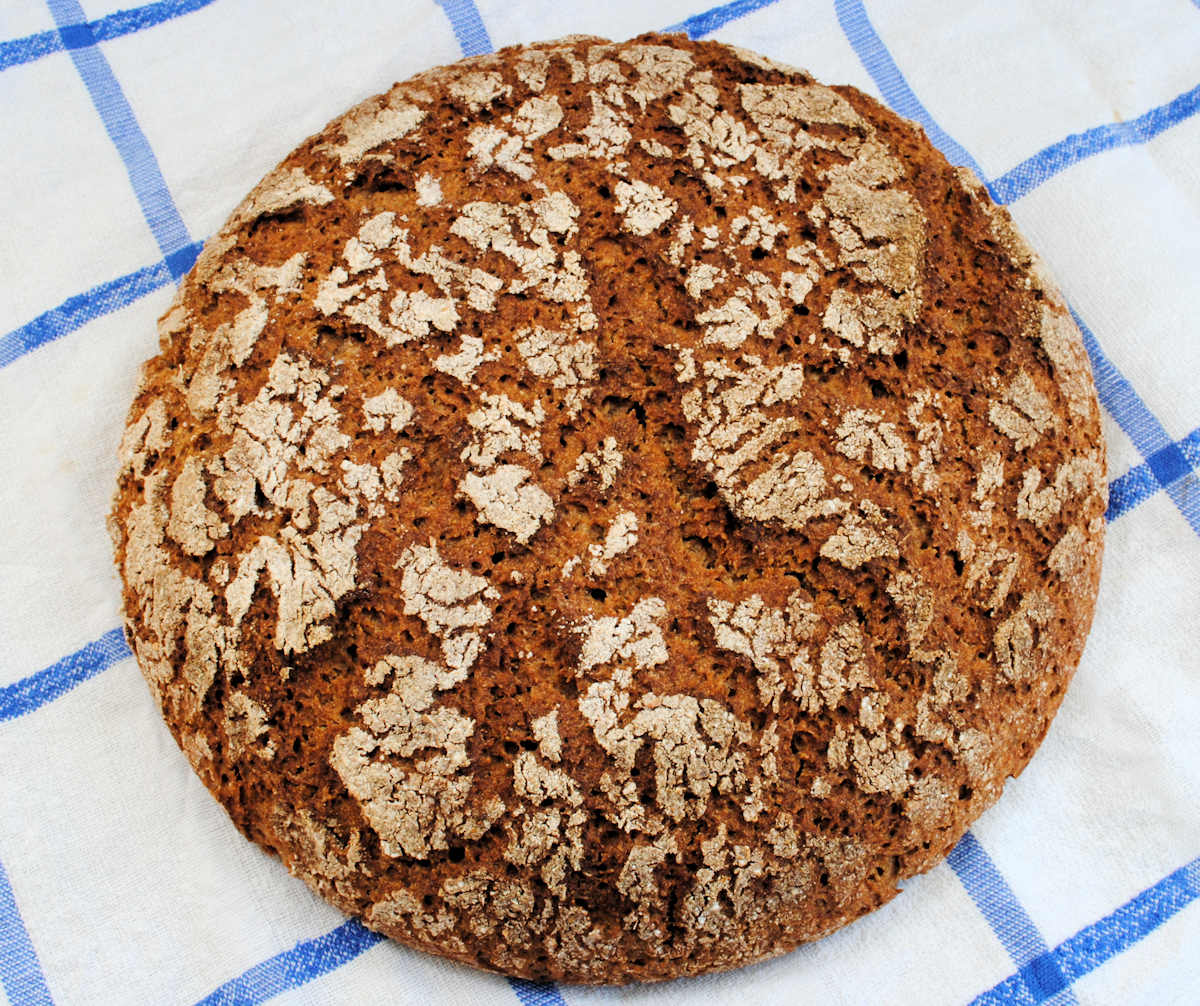Malted and soured with malt vinegar, flavoured with coriander and caraway seeds, this recipe makes an excellent loaf of rye bread, the next best to a rye sourdough.

All rye now
There are some myths surrounding rye bread. They say you can't eat it freshly baked. It only goes well with things like lox and pastrami. It's not suited to be toasted. It's stodgy, dense and gloopy.
The first point I'll agree with: when fresh, it's awfully difficult to slice and it will crumble into oblivion before you lift it to your mouth.
But the further claims are mere assumptions. You can certainly have a ham sandwich on rye, or cheese, jam or even bacon.
Rye keeps well especially wrapped in oiled parchment but when it goes slightly dry by all means stick it in the toaster, just not for a very long spell. Delicious.
And the last myth about stodginess - it's not fluffy that's for sure, but far from stodgy. Guess what: your gut much prefers it to the great sliced white.
Light rye, dark rye
The recipe is Dan Lepard's from 'Short and Sweet'. I've adapted it somewhat: in the original version all the flour used is dark rye.
As much as I love rye bread, it does tend to be overly dense when leavened on yeast rather than sourdough. That’s the reason why I lighten it a little with wheat flour, just so it toasts nicer.
The two types of rye flour available in the UK, light and dark, are the rye equivalents to white and wholemeal wheat. Dark rye is milled coarsely and has more bran and other ‘bits’. Light rye flour is more processed, finer and less sticky.
Is it difficult to make rye bread dough?
Do you remember making mud cakes all those years ago? Throwback to your childhood: this dough resembles precisely those creations.
It is fairly easy to make, even without recourse to a standing or otherwise mixer. You can mix the starter, which is all the water, the yeast and some rye flour, with a spoon.
Once it’s bubbling, which won’t take long in a warm kitchen, the remaining flours and all the additions go in.
Coriander and caraway seeds give the bread a scent of those serious sourdoughs from Germany, Eastern and Northern Europe.
The malt vinegar makes it taste a little like those big players and honey balances the sourness as well as helps the yeast work.
Making the main dough
Without a mixer you can beat everything to a rough dough with a spatula or a wooden spoon, then stick in and get your paws dirty, just like when you were five.
It will not be very elastic or cohesive like wheat dough is, but rather sticky and messy. It also doesn’t need to rise in bulk but can be shaped straight away.
Dip your hands in rye flour to do that, forming as tight a ball as you can, rolling and shaping it rather like a dung beetle. Dusted with more flour and covered with a clean tea towel, it will need about two hours in a warm place.
It should rise and spread by about a third, and handsomely crack around the surface quite like an enormous crack biscuit.
Baking rye malt bread
It should be baked in an oven which is not especially roaring hot but with plenty of moisture.
If you have an oven with an added moisture function, use that. The rest of us mortals can either use a spray bottle with clean water, or a heavy tray preheated at the bottom of the oven.
When the bread goes in, immediately pour in a lot of boiling water from a kettle onto that tray, creating a satisfying whoosh! of steam.
This bread will take just under an hour to bake. It then needs to cool completely on a wire rack, and preferably spend the night wrapped in oiled parchment or a clean linen cloth before slicing.
That’s for the best taste experience; however, you and I both know an overnight wait before trying a bread is far too much to expect.
More rye bread recipes
Easy deli style homemade rye bread recipe. It is completely possible to make deli style bread without a sourdough starter. This one is great for sandwiches and excellent for toasting.
Black treacle rye bread with seeds, sultanas, barley and oats, it is rustic and easy to make. A gorgeous, knobbly loaf from Nigel Slater's recipe.
Scalded rye and honey bread with a hint of cinnamon. Scalding flour works as dough enhancer, softening the crumb and prolonging the life of a loaf.
Rye sourdough recipes
Borodinsky bread is Russian rye sourdough, with its history going back to Napoleonic wars. Great for gut health, this rye sourdough loaf is named after the battle of Borodino.
Pumpkin and sunflower seeded rye sourdough, German style blonde Pumpernickel. Sourdough on rye starter with only a small addition of wheat flour which can be swapped for spelt.
Sourdough light rye bread with yoghurt, made with wheat sourdough starter from the Tartine bread recipe. Light rye yoghurt sourdough, healthy and tasty, with whole rye grain and linseed.